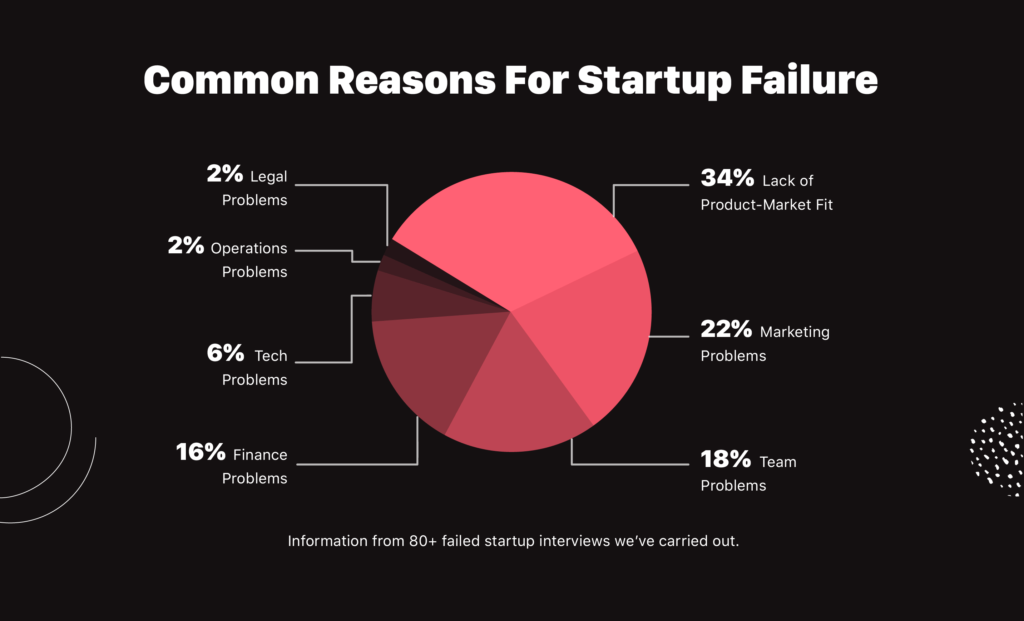- Failure Rate is the number of failures per unit of time.
- According to reports, 70% of businesses fail after a decade.
- Failure Rate is used to identify risk in business.
The failure rate, expressed in failures per unit of time, is the rate at which a manufactured process or unit fails. A system’s failure rate typically depends on time, with the rate changing over the system’s life cycle. And it is true in business as well.
Failure Rate in Business
Approximately 20 percent of small businesses fail within the first year, according to data from the Bureau of Labor Statistics, as stated by Fundera. 30 percent of firms would have collapsed by the end of the second year. And Approximately half would have failed by the end of the fifth year. And just 30 percent of firms will remain by the end of the decade equating to a 70 percent failure rate.
Of course, there are some conditions we have to consider in this information. Here are some factors that are usual.
-
Failure definition:
This research relies on a fixed number of companies that have been published. A year later, if a corporation no longer exists, it is counted as a loss. There could, however, be entirely legitimate explanations for the company no longer operating. Instead of attempting to sell it or transition ownership, the owner may be interested in retiring and choose to close the business; it is hardly fair to count this as the company’s loss.
-
The Annual Variation:
There is some variation from year to year, depending on economic factors, as you would expect. For companies studied from around 2007 to 2017, the data mentioned above apply. It seems like all of these figures remain reasonably consistent; we may see that the rate of failure ranges between 15 and 25 percent for a single year, but it’s not likely to spike or fall.
-
Events oddity:
Major extreme rarity events can alter the failure rate for organizations drastically for better or worse. For example, many industries, including bars, restaurants, nightclubs, and other niches dependent on near physical contact. The Covid-19 pandemic has produced harsh economic conditions. For 2020, failure rates are extraordinarily high, though we do not yet have all the statistics.
-
Coverage
: We still need to be careful of reporting errors. In these metrics, some small companies might not be counted due to working in secrecy or due to clerical oversights. Other companies may be counted, but they may not function like traditional companies.
-
The longevity of the Company:
Even when performing sub-optimally, companies can survive. In this study, several successful companies might be hanging by a thread.
Why the Failure Rate matters?
As a mechanism for discouragement, some individuals use small-business loss figures. They want to educate would-be businessmen about the risks of starting a company. Alternatively, the rate of failure gives you an idea of how and when organizations appear to fail. Just 20% will fail in the first year, but 50 percent will fail in the first five years.
In other words, between years 2 and 5, an additional 30 percent of companies will collapse, or around 7.5 percent of the initial sum each year.
If we expect a kind of “death by natural causes” and take the statistic of 7.5 percent as a predictable rate of failure, in one way or another, we can assume about 12.5 percent of companies fail in the first year due to lack of planning.
